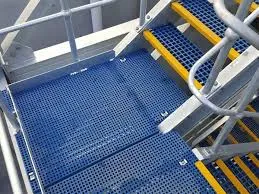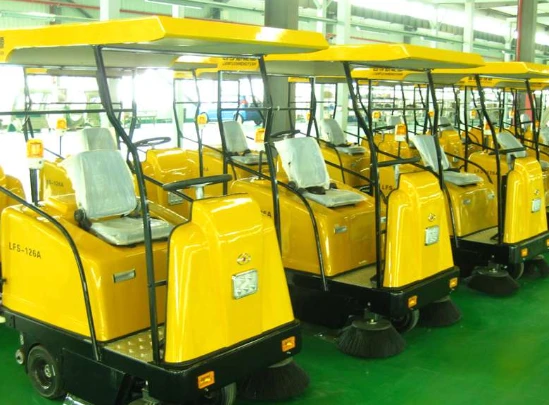
-
 Afrikaans
Afrikaans -
 Albanian
Albanian -
 Amharic
Amharic -
 Arabic
Arabic -
 Armenian
Armenian -
 Azerbaijani
Azerbaijani -
 Basque
Basque -
 Belarusian
Belarusian -
 Bengali
Bengali -
 Bosnian
Bosnian -
 Bulgarian
Bulgarian -
 Catalan
Catalan -
 Cebuano
Cebuano -
 China
China -
 China (Taiwan)
China (Taiwan) -
 Corsican
Corsican -
 Croatian
Croatian -
 Czech
Czech -
 Danish
Danish -
 Dutch
Dutch -
 English
English -
 Esperanto
Esperanto -
 Estonian
Estonian -
 Finnish
Finnish -
 French
French -
 Frisian
Frisian -
 Galician
Galician -
 Georgian
Georgian -
 German
German -
 Greek
Greek -
 Gujarati
Gujarati -
 Haitian Creole
Haitian Creole -
 hausa
hausa -
 hawaiian
hawaiian -
 Hebrew
Hebrew -
 Hindi
Hindi -
 Miao
Miao -
 Hungarian
Hungarian -
 Icelandic
Icelandic -
 igbo
igbo -
 Indonesian
Indonesian -
 irish
irish -
 Italian
Italian -
 Japanese
Japanese -
 Javanese
Javanese -
 Kannada
Kannada -
 kazakh
kazakh -
 Khmer
Khmer -
 Rwandese
Rwandese -
 Korean
Korean -
 Kurdish
Kurdish -
 Kyrgyz
Kyrgyz -
 Lao
Lao -
 Latin
Latin -
 Latvian
Latvian -
 Lithuanian
Lithuanian -
 Luxembourgish
Luxembourgish -
 Macedonian
Macedonian -
 Malgashi
Malgashi -
 Malay
Malay -
 Malayalam
Malayalam -
 Maltese
Maltese -
 Maori
Maori -
 Marathi
Marathi -
 Mongolian
Mongolian -
 Myanmar
Myanmar -
 Nepali
Nepali -
 Norwegian
Norwegian -
 Norwegian
Norwegian -
 Occitan
Occitan -
 Pashto
Pashto -
 Persian
Persian -
 Polish
Polish -
 Portuguese
Portuguese -
 Punjabi
Punjabi -
 Romanian
Romanian -
 Russian
Russian -
 Samoan
Samoan -
 Scottish Gaelic
Scottish Gaelic -
 Serbian
Serbian -
 Sesotho
Sesotho -
 Shona
Shona -
 Sindhi
Sindhi -
 Sinhala
Sinhala -
 Slovak
Slovak -
 Slovenian
Slovenian -
 Somali
Somali -
 Spanish
Spanish -
 Sundanese
Sundanese -
 Swahili
Swahili -
 Swedish
Swedish -
 Tagalog
Tagalog -
 Tajik
Tajik -
 Tamil
Tamil -
 Tatar
Tatar -
 Telugu
Telugu -
 Thai
Thai -
 Turkish
Turkish -
 Turkmen
Turkmen -
 Ukrainian
Ukrainian -
 Urdu
Urdu -
 Uighur
Uighur -
 Uzbek
Uzbek -
 Vietnamese
Vietnamese -
 Welsh
Welsh -
 Bantu
Bantu -
 Yiddish
Yiddish -
 Yoruba
Yoruba -
 Zulu
Zulu
FRP Lightweight Vehicles & Fiberglass Tanks Durable Custom Solutions
- Introduction to FRP in Lightweight Vehicle Manufacturing
- Technical Advantages of FRP Composites
- Performance Comparison: FRP vs. Traditional Materials
- Market Leaders in FRP Automotive Solutions
- Customization Options for FRP-Based Designs
- Real-World Applications of FRP Lightweight Vehicles
- Future Outlook for FRP in Automotive Innovation

(similar titles for frp car lightweight vehicle made of)
Innovations in Lightweight Vehicle Manufacturing with FRP Materials
Fiber-reinforced polymer (FRP) composites have revolutionized the automotive industry by enabling the production of lightweight, durable vehicles. With a density 40% lower than aluminum and 60% lighter than steel, FRP-based structures reduce overall vehicle weight by 15–30%, directly improving fuel efficiency and reducing emissions. A 2023 study by the International Council on Clean Transportation found that a 10% reduction in vehicle weight correlates to a 6–8% boost in energy efficiency. This positions FRP as a critical material for meeting global sustainability targets.
Technical Superiority of FRP Composites
FRP composites combine high-strength fibers (e.g., fiberglass, carbon) with polymer resins, achieving tensile strengths of 1,000–1,500 MPa—surpassing conventional steel (400–550 MPa). Key technical benefits include:
- Corrosion resistance: Zero degradation in humid or chemically aggressive environments
- Design flexibility: Moldable into complex shapes like rectangular tanks or aerodynamic vehicle panels
- Thermal stability: Operates reliably between -50°C and 150°C
Material Performance Benchmarking
| Material | Weight (kg/m³) | Tensile Strength (MPa) | Cost per Unit ($) | Lifespan (years) |
|---|---|---|---|---|
| FRP | 1,800 | 1,200 | 85 | 25+ |
| Aluminum | 2,700 | 400 | 65 | 15 |
| Steel | 7,850 | 550 | 50 | 10 |
Industry Leaders in FRP Automotive Solutions
Three manufacturers dominate the FRP vehicle component sector:
- Vertex Composites: Holds 32% market share, specializing in modular FRP chassis systems
- TerraFiber Automotive: Pioneered vacuum-infused FRP panels with 18% faster production cycles
- PolyDyne Industries: Offers hybrid FRP-metal solutions for heavy-duty applications
Tailored FRP Solutions for Specific Use Cases
Customization protocols include:
- Wall thickness optimization (3–25 mm)
- Resin selection (epoxy, vinyl ester, or phenolic)
- Integrated mounting points for auxiliary systems
A recent project for a commercial fleet operator involved developing 1,200-liter FRP fuel tanks that reduced weight by 210 kg per vehicle versus steel equivalents.
FRP in Action: Sector-Specific Implementations
Case studies demonstrate measurable outcomes:
- Public Transit: FRP bus frames decreased maintenance costs by 45% over 5 years
- Marine Logistics: Fiberglass-reinforced cargo containers showed 90% less corrosion damage
- Emergency Vehicles: Custom FRP ambulance bodies improved payload capacity by 22%
Advancing Lightweight Mobility Through FRP Innovation
With the global FRP automotive market projected to grow at 8.7% CAGR through 2030, next-generation developments focus on bio-sourced resins and AI-driven structural optimization. Manufacturers adopting FRP solutions report 19% faster time-to-market for new vehicle models compared to traditional material workflows. As regulatory pressures intensify—such as the EU’s 2035 emission mandates—FRP-enabled lightweight vehicles will remain indispensable for sustainable transportation ecosystems.

(similar titles for frp car lightweight vehicle made of)
FAQS on similar titles for frp car lightweight vehicle made of
Q: What are the benefits of using FRP for lightweight car manufacturing?
A: FRP (Fiberglass Reinforced Plastic) offers high strength-to-weight ratios, corrosion resistance, and design flexibility, making it ideal for lightweight vehicles that require durability and fuel efficiency.
Q: How does an FRP rectangular tank compare to traditional metal tanks?
A: FRP tanks are lighter, rust-resistant, and better suited for harsh environments, unlike metal tanks, which are prone to corrosion and heavier.
Q: Can FRP be used for both automotive and industrial lightweight applications?
A: Yes, FRP is versatile and widely used in automotive parts, industrial storage tanks, and other applications where weight reduction and chemical resistance are critical.
Q: What design considerations are key for FRP-based lightweight vehicles?
A: Key considerations include material thickness optimization, structural reinforcement, and compatibility with bonding agents to ensure performance without compromising weight savings.
Q: Why choose fiberglass material for a rectangular tank over plastic or steel?
A: Fiberglass provides superior durability, chemical resistance, and longevity compared to plastics, while being lighter and maintenance-free compared to steel.
Latest news
-
Durable Fiber Pipes & FRP Tanks Corrosion-Resistant SolutionsNewsMay.27,2025
-
FRP Lightweight Vehicles & Fiberglass Tanks Durable Custom SolutionsNewsMay.27,2025
-
FRP Dampers Corrosion-Resistant & Lightweight Vibration SolutionsNewsMay.27,2025
-
High-Temp & Corrosion-Resistant FRP Materials for Nuclear/Thermal PowerNewsMay.26,2025
-
FRP Desalination Pipes & Fittings Efficient Corrosion-Resistant SolutionsNewsMay.26,2025
-
T38 Drill Rod Guide Choosing & Using for Maximum EfficiencyNewsMay.26,2025









